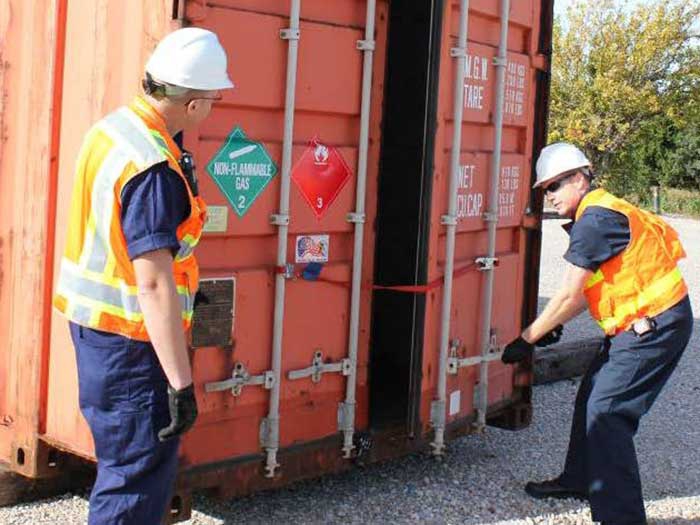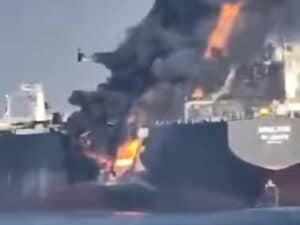
USCG issues Safety Alert on container handling
Written by Nick Blenkey
JULY 29, 2016 — The U.S. Coast Guard has issued a Safety Alert (08-16) reminding Coast Guard Container Inspectors and others involved in the inspection or handling of intermodal containers that there is always a risk of exposure to hazardous materials, whether the containers are marked as containing HAZMAT or not.
During a recent review of Coast Guard container inspector injuries, there were several instances related to acute exposures to hazardous materials.
In all reported instances, exposed inspection personnel immediately backed away from the container to a safe distance and sought medical treatment and professional response to the release.
Indications of hazards can include oxygen deficient environments, hazardous material leaks, odors or sounds (such as when compressed gas is released), symptoms of dizziness or light-headedness, and any other indication of hazardous material encounter, such as a dermal sensation. It is critically important to use a multi-gas detector to improve inspector hazard detection capabilities and situational awareness.
The causes for these reported exposures and hazardous situations varied but included:
- Cargoes shifting in shipment and damaged packaging, blocking, and bracing;
- Poorly secured cylinders or unsecured lids on drums;
- Container vents taped shut from the inside and, as such, not visible to inspectors; and
- Improper loading of the container and undeclared hazardous materials off-gassing due to temperature and/or humidity changes.
The Coast Guard strongly recommends that port professionals, shippers, and industry personnel working with containerized cargo follow all best practices and meet all safety requirements during each stage of the transportation stream.
Safely package, stow, and handle containers and cargo and immediately address any situation involving hazardous materials by contacting the appropriate private or public emergency response organizations.
Never underestimate the importance of:
- Properly loading containers and using proper hazardous material communication (e.g., placards and labels) in accordance with domestic and international regulations;
- Following established safety procedures when conducting container inspections; and
- Knowing hazardous material release protocols, including evacuation procedures when hazards are identified or suspected.
Read the Safety Alert HERE





Leave a Reply
You must be logged in to post a comment.